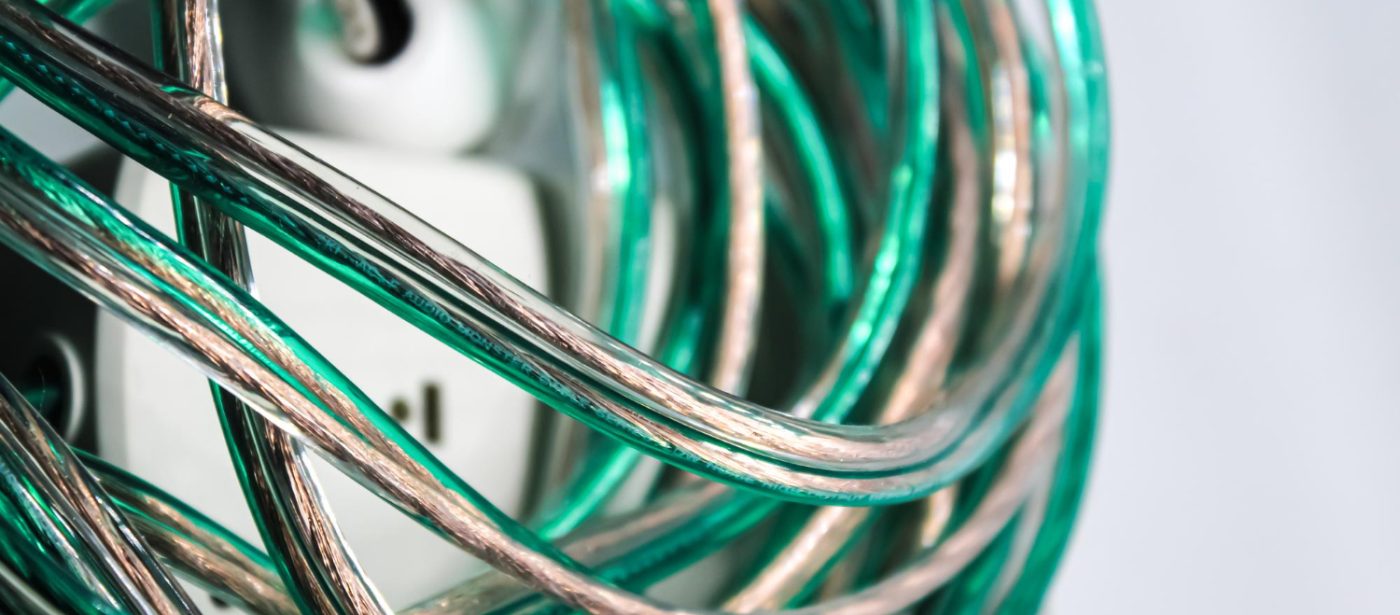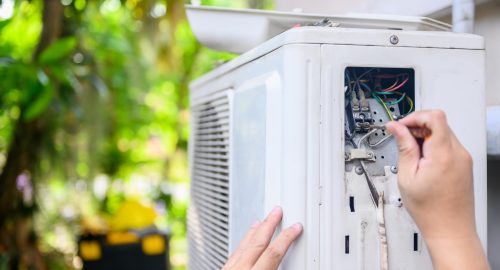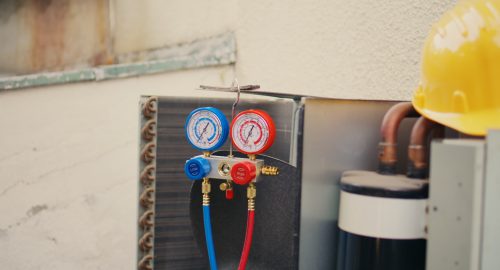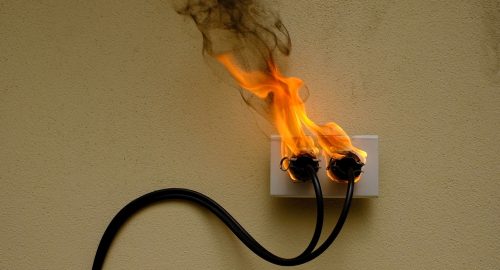Many homes in Crystal built during the 1960s and 1970s may still have aluminum wiring tucked behind the walls. While it might not seem like an issue at first glance, aluminum wiring can pose serious safety concerns over time. The material expands and contracts more than copper, which increases the chance of loose connections. Loose connections in electrical systems can overheat, potentially starting a fire inside your home.
Homeowners often are not aware of the risks until something seems off, such as flickering lights or outlets that feel warm to the touch. Understanding the signs of a problem and knowing how to spot outdated or damaged wiring can help protect your home and your family. If your Crystal home still has aluminum wiring, it is worth learning what puts your system at risk and what to do about it before those risks turn into costly damage.
Why Aluminum Wiring Can Be Dangerous
Aluminum is more prone to expanding and contracting than copper, which was commonly used in wiring once copper prices rose. This shift led to the use of aluminum in many residential homes. The problem is that when aluminum wire expands and contracts repeatedly, it can come loose from its connections over time. This creates resistance in the circuit, which generates heat. You might not see it happening, but behind your wall it could slowly be building up enough heat to start a fire.
This wiring type also tends to oxidize more than copper. That white or gray-looking oxidation on aluminum wires does not conduct electricity well. When the wire cannot carry current smoothly, hotspots can form at outlets, switches, and junctions. These hotspots cause the insulation to break down, which can expose more of the wire and escalate the danger.
Some homes have mixed wiring systems, where aluminum may connect directly to copper. If not managed using the right connectors and methods, those two metals can react with each other, leading to corrosion and even greater resistance in the line. Without proper attention, these issues can silently increase the risk of electrical failure or fire.
Warning Signs of Dangerous Aluminum Wiring
Aluminum wiring problems do not always announce themselves clearly. Often, the first signs are subtle. Homeowners in Crystal should watch out for early indicators of trouble, especially in older homes. Catching these symptoms early can mean avoiding serious damage later.
Here are some common signs to look out for:
– Lights that flicker even after changing the bulb
– Switches or outlets that are warm to the touch
– Discoloration or soot marks around outlets and light switches
– A faint, burning plastic smell near outlets or electrical panels
– Crackling, buzzing, or sizzling sounds behind walls
– Circuit breakers that trip often without a clear reason
For example, you might notice that the lights in just one room randomly dim when the microwave runs. This could have nothing to do with the microwave itself and more to do with a poor aluminum wiring connection heating up when the circuit is put under load. Alone, it may seem like a small annoyance, but paired with warm outlets or discoloration, that is a strong signal something deeper is wrong.
Some homeowners may mistakenly chalk these signs up to old wiring, without considering the specific materials used or the hidden risks. If these symptoms come up, they should not be treated as a minor inconvenience. These are real safety warnings that signal poor contact or overheating behind the walls. Addressing them quickly helps reduce the likelihood of fire and protects your home’s electrical integrity.
How to Inspect for Aluminum Wiring
Homeowners in Crystal who suspect their houses have aluminum wiring can do an initial inspection, but a full evaluation should be handled by qualified professionals. Still, it is helpful to understand what to look for before making that call.
At the circuit panel, look for markings on the wire insulation that say AL or Aluminum. These markings are the most obvious sign that the home contains aluminum wiring. If you are checking outlets, remove the cover plate and look at the wires connected to the device. Do not touch anything unless the power is completely shut off. If the wires look silver or dull gray instead of the typical copper color, they might be aluminum.
For safety and accuracy, homeowners should not rely solely on a visual check. Some of the most dangerous connections are hidden behind walls or inside switch boxes. Even if most parts of the system seem fine, problems often start at contact points that are not easy to access.
In many cases, older aluminum wiring is paired with outlets and switches that were not built to support it. This mismatch can speed up deterioration. If your home shows any of the warning signs mentioned earlier, then it is a good time to have a licensed electrician in Crystal perform a full inspection. Our technicians use the right testing equipment and know what to look for beyond the obvious signs. They can tell if connections are heating up or becoming loose, even if the wiring appears stable to the untrained eye.
Solutions for Aluminum Wiring Problems
Once aluminum wiring is identified, the next step is correcting it to prevent future issues. There are a few options depending on the setup of your home and how advanced the degradation is.
1. Complete Rewiring – This means removing all aluminum wiring throughout the house and replacing it with copper. It is the most permanent solution and eliminates the risk, but it is also the most involved.
2. Aluminum to Copper Pigtailing – This solution uses a short piece of copper wire, called a pigtail, to connect the aluminum wire to outlets and switches, with a specialized connector rated for aluminum. When done properly by our professionals, this method can significantly reduce the risk of loose connections and heat buildup.
3. CO/ALR Rated Devices – These outlets and switches are built to handle the unique properties of aluminum wires. Replacing standard devices with CO/ALR-rated ones can add safety, especially at key points in the circuit.
4. Oxidation-Resistant Compounds – In some repairs, applying a special compound to the ends of aluminum wire can reduce oxidation and improve conductivity.
Each of these methods needs to be handled by a licensed electrician familiar with aluminum retrofit safety practices. Quick fixes or the wrong materials can make the problem worse. Our technicians in Crystal always use approved methods to meet current electrical codes and performance standards.
Ensuring a Safe Home Environment in Crystal
Ongoing maintenance is key to keeping wiring systems safe and functional. If you live in an older home in Crystal, scheduling regular electrical inspections is an important step. Wires age, and environmental factors such as moisture or attic temperatures can speed up deterioration.
Even after a professional repair or upgrade, it is smart to stay alert to minor changes like flickering lights or warm outlets. These small clues can show up again if aluminum wiring continues to deteriorate elsewhere in the system. Keeping track of any electrical issues as they appear makes it easier to catch problems early and prevents things from getting too far out of hand.
Homeowners should avoid making repairs on their own. Without the right training, it is easy to create unsafe conditions by tightening the wrong connection or using the wrong part. Hiring licensed and experienced technicians helps ensure that the real problem is identified and fixed correctly from the start.
Protect Your Home with Expert Electrical Services
Dealing with aluminum wiring does not have to be overwhelming. With the right plan in place and help from trained professionals, homeowners in Crystal can enjoy peace of mind knowing their electrical systems are safe. Even if your home has not shown obvious symptoms, it is better to check and be sure than to wait until something goes wrong.
Regular inspections and thoughtful upgrades go a long way in protecting your home’s electrical infrastructure. If you are unsure whether aluminum wiring is present or if the current wiring is safe, getting a professional opinion is the next best step. No guesswork, no unnecessary risks, just clear answers and reliable solutions to keep your home protected.
If you continue to notice warning signs and are concerned about the safety of your wiring, trust Stafford Home Service Inc to arrange a professional evaluation by an electrician in Crystal who can ensure your home is safe and up to code. For a quick estimate or to book a service visit, please contact us today.








